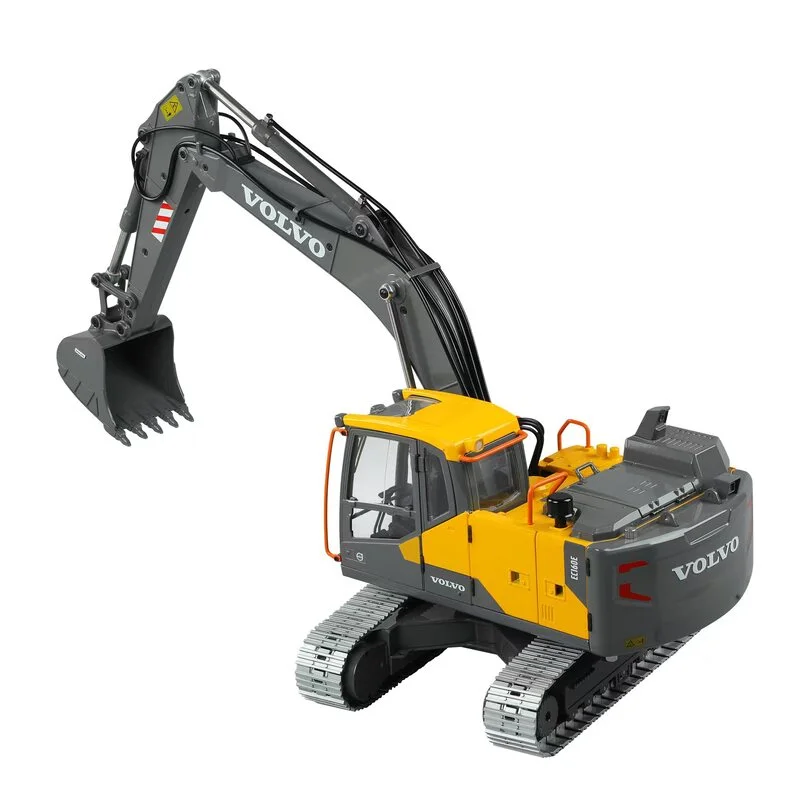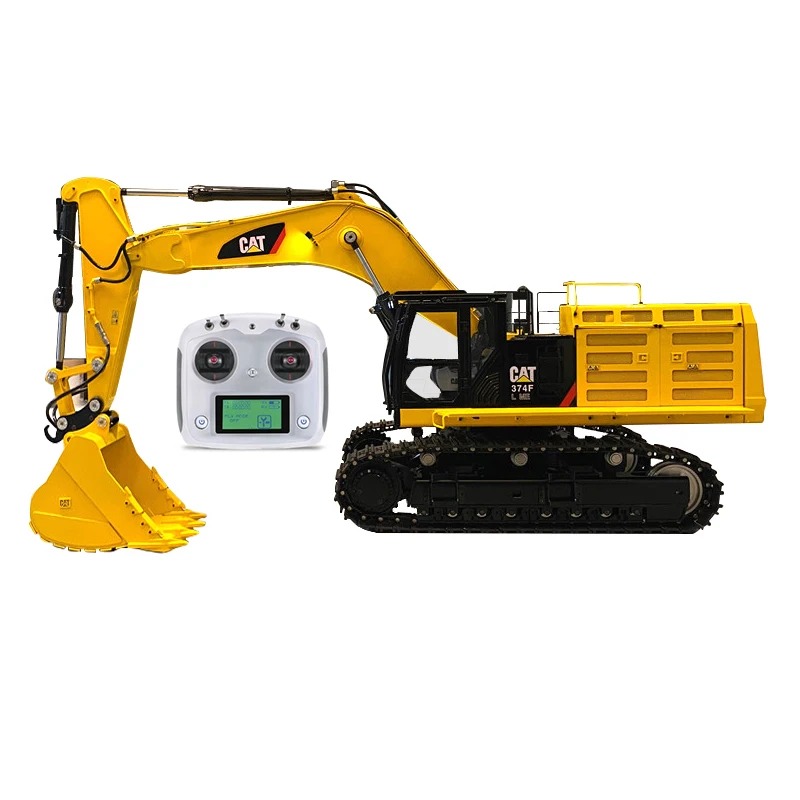The Essential Attributes of Excavator That Keep It a Must-Have Device
Excavators are indispensable in the building and landscape design industries. Their versatile accessories enable a series of jobs, from digging to demolition. Additionally, they flaunt exceptional excavating depth and reach, powered by durable engines. Driver convenience and compact designs enhance usability in numerous settings. What genuinely establishes excavators apart are their innovative hydraulic systems and longevity. Comprehending these attributes can clear up why they are thought about important tools on any type of task site.
Versatile Add-ons for Boosted Functionality
Excavators are effective makers on their own, the addition of versatile attachments substantially boosts their capability. These add-ons transform a common excavator right into a multi-purpose tool, ideal for a selection of jobs. Containers, for example, can be found in numerous shapes and sizes, enabling operators to dig, scoop, and move products effectively. Hydraulic thumbs can be included for enhanced gripping and handling of bulky products, such as logs or rocks.Furthermore, specialized attachments like breakers and augers permit drilling and demolition work, expanding the excavator's energy on construction sites. remote control excavator. Grapples are another option, ideal for sorting and moving debris. This flexibility not just enhances productivity but also decreases the requirement for several devices, conserving time and costs. By outfitting excavators with the ideal add-ons, drivers can tackle diverse jobs, making them crucial in the building market
Superior Digging Deepness and Get To
Excavators are developed with remarkable excavating depth and reach, permitting them to maneuver in tight rooms and gain access to hard-to-reach locations. This ability is critical for various building and excavation tasks, where conventional equipment might fail. With adjustable boom arms and extendable tracks, excavators can quickly browse unequal surface while keeping stability.The digging depth can vary substantially among models, typically varying from 10 to 25 feet, depending upon the layout and function. This function makes it possible for drivers to dig deep into structures, trenches, and various other deep frameworks effectively. In addition, the reach of an excavator permits precise excavating and product handling without rearranging the maker regularly, conserving time and labor costs.Ultimately, the premium excavating deepness and reach of excavators make them crucial for professionals seeking to complete complicated jobs with precision and performance. Their versatility improves efficiency on job websites, showcasing them as an important tool in modern-day construction.
Powerful Engine Performance

Powerful engine performance plays an essential role in the capabilities of an excavator when it comes to efficiency and productivity on building and construction websites. A robust engine produces significant horsepower, permitting the machine to tackle heavy-duty jobs with ease - remote control excavator. This toughness translates right into faster cycle times, enabling drivers to complete projects more quickly.Additionally, effective engines supply the needed torque to manage tough terrains and differed lots, making certain that the excavator can execute successfully under different conditions. Whether it is lifting, excavating, or relocating materials, the engine's efficiency straight affects the general functional effectiveness of the machine.Furthermore, innovations in engine innovation have actually resulted in boosted fuel effectiveness, decreasing functional costs while keeping power output. Ultimately, the engine's performance functions as the backbone of an excavator, verifying its standing as an important device in the construction industry
Advanced Hydraulic Systems

Boosted Raising Capacity
A substantial improvement in raising capacity can be credited to sophisticated hydraulic systems located in modern-day excavators. These systems use high-pressure liquid to create higher pressure, allowing operators to raise larger loads with ease. The design behind these hydraulics warranties peak efficiency, supplying a remarkable power-to-weight proportion that boosts total efficiency. As a result, excavators can tackle requiring jobs, such as raising huge materials or devices, without jeopardizing security. Additionally, the durable design of hydraulic parts adds to raised longevity and dependability, making them suitable for various construction environments. This boosted lifting capacity not just minimizes the time needed for jobs however also lessens the requirement for extra equipment, proving vital for both productivity and cost-effectiveness in the construction sector.
Boosted Precision Control
Although conventional excavators frequently fought with accuracy, modern hydraulic systems have actually transformed control devices, making it possible for drivers to carry out tasks with amazing accuracy. These advanced systems make use of proportional control shutoffs that permit smoother and more receptive movements, significantly minimizing the margin for error. Operators can currently carefully tune the excavator's motions, making it easier to browse tight rooms and take care of delicate materials. Enhanced feedback systems better inform operators of real-time performance, making certain excellent sychronisation in between the equipment and driver. This increased precision not just enhances effectiveness yet likewise improves safety and security on work sites, reducing the danger of crashes. As a result, contemporary excavators geared up with sophisticated hydraulic systems are invaluable tools for building and excavation tasks calling for meticulous precision.
Driver Convenience and Presence
Driver convenience and visibility are critical components in the layout of contemporary excavators (remote control excavator). Functions such as ergonomic seat style, improved exposure choices, and reliable control formats significantly improve the driver's experience and efficiency. Focusing on these aspects guarantees that operators can work properly and safely in different conditions
Ergonomic Seat Design
Comfort and visibility are paramount in excavator layout, with the ergonomic seat my explanation playing a crucial duty in improving the operator's experience. An ergonomic seat is crafted to support the operator's body, minimizing exhaustion throughout long hours of procedure. Flexible attributes, such as seat elevation, backrest angle, and back assistance, deal with private preferences and promote perfect pose. These changes enhance convenience and allow the operator to keep concentrate on jobs without discomfort. Additionally, a properly designed seat can supply much better side support, enabling smoother maneuvering when the excavator is in procedure. This thoughtful style not only boosts performance but additionally adds to overall safety and security, making certain that operators can perform their duties effectively and effectively.
Boosted Visibility Functions
The design of an excavator expands past just the seat, with improved exposure attributes playing a considerable duty in operator comfort and general safety. Huge home windows and purposefully located mirrors offer operators with a clear view of their surroundings, reducing blind areas. This design consideration permits much better spatial recognition, which is crucial in busy job environments. Furthermore, lots of excavators integrate rearview cams and advanced monitoring systems that help drivers in steering tight areas. The combination of these exposure features not just advertises security however also minimizes driver exhaustion by making it possible for easier tracking of workspace. Inevitably, enhanced visibility adds to much more reliable procedures and assists ensure that excavators can execute their jobs successfully and safely.
Control Format Effectiveness
While maneuvering complex job websites, an efficient control design considerably enhances both driver convenience and presence. A well-designed control setup guarantees that drivers can access necessary features with minimal initiative, minimizing tiredness during long hours. Ergonomic joystick positionings and user-friendly button arrangements permit smooth operation, making it possible for drivers to keep concentrate on the task at hand. Additionally, clear visibility of both the workspace and the control panel is critical for security and accuracy. Modern excavators usually incorporate adjustable seating and control setups to accommodate various operator choices, even more boosting comfort. Inevitably, a thoughtfully made control design not only enhances efficiency yet additionally cultivates a safer working setting by enabling operators to react promptly to changing conditions.
Compact Design for Urban Environments
As metropolitan construction sites often deal with room constraints, a compact layout becomes vital for excavators running in these atmospheres. These equipments are crafted to navigate limited spaces, allowing for reliable maneuverability in congested work websites. A reduced footprint allows them to function closely to existing structures, decreasing interruption and maximizing productivity.The portable layout typically consists of shorter tracks and a tighter transforming span, promoting procedure in narrow alleys and confined locations. Lightweight products contribute to relieve of transportation, making it easier to move the excavator from one area to one more within the city landscape.Additionally, several portable excavators are furnished with functions such as versatile add-ons and extendable arms, improving their performance while preserving a tiny size. This versatility permits operators to tackle a selection of tasks, from excavating to demolition, all while fitting perfectly right into the constraints of metropolitan settings.

Resilience and Maintenance Considerations
Sturdiness stands as a crucial aspect in the performance and long life of excavators, particularly popular urban atmospheres. These makers go through rigorous conditions, consisting of varying dirt types, extreme temperature levels, and high-frequency use. High-grade products and robust building and construction are necessary for making certain that excavators can withstand these obstacles without jeopardizing functionality.Regular maintenance is just as essential in protecting sturdiness. Scheduled assessments, timely oil changes, and the substitute of used components add considerably to an excavator's lifespan. Operators needs to likewise take note of hydraulic systems, tracks, and undercarriages, as these components typically birth the brunt of wear and tear.Investing in resilient excavators with extensive upkeep plans boosts reliability and decreases downtime, ultimately bring about enhanced productivity on building and construction websites. Comprehending the interplay between durability and maintenance is crucial for any individual thinking about the acquisition of an excavator for metropolitan jobs.
Regularly Asked Questions
How Do Excavators Compare to Various Other Building And Construction Equipment?
Excavators stick out amongst building and construction tools as a result of their versatility, enabling jobs such as excavating, grading, and training. Contrasted to others, their hydraulic abilities supply greater efficiency and power, making them important on various task sites.
What Safety Features Are Included in Modern Excavators?
Modern excavators incorporate numerous safety features, consisting of rollover defense systems, alarm systems, and progressed visibility enhancements. These aspects interact to lessen threats, guaranteeing driver safety while boosting efficiency on building websites and other demanding settings.

Can Excavators Be Utilized in Winter Conditions?
Excavators can undoubtedly be made use of in wintertime problems, provided they are geared up with suitable winter months attachments and precautions are taken. Proper upkeep and changes improve their efficiency, ensuring efficient operation regardless of tough weather condition scenarios.
What Is the Typical Life Expectancy of an Excavator?
The average life expectancy of an excavator typically ranges from 7,000 to 10,000 hours of operation. This duration can significantly depend on upkeep practices, running conditions, and the specific have a peek at this website version's toughness and style attributes.
Exactly how Do I Select the Right Excavator Size for My Project?
Choosing the right excavator dimension see here now includes evaluating project range, site problems, and material kinds. Think about factors like reach, deepness requirements, and weight ability to ensure maximum performance and safety and security throughout operation. Size matters substantially in job success. Furthermore, the reach of an excavator allows for specific digging and product handling without rearranging the maker often, conserving time and labor costs.Ultimately, the superior excavating depth and reach of excavators make them indispensable for specialists seeking to finish complex tasks with precision and effectiveness. Convenience and visibility are vital in excavator design, with the ergonomic seat playing an essential function in boosting the driver's experience. The design of an excavator prolongs past simply the seat, with enhanced exposure attributes playing a substantial duty in operator convenience and overall safety. Modern excavators frequently include flexible seating and control settings to fit numerous driver choices, even more improving convenience. Light-weight products add to reduce of transport, making it simpler to move the excavator from one location to one more within the metropolitan landscape.Additionally, many compact excavators are geared up with functions such as extendable arms and versatile accessories, boosting their performance while keeping a small dimension.
Comments on “10 Things to Consider Before Purchasing a remote control excavator for Your Company”